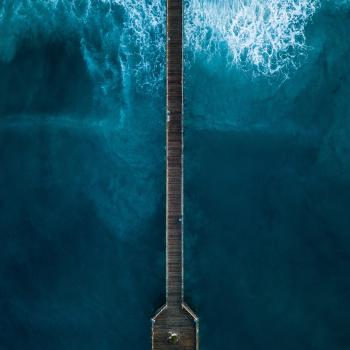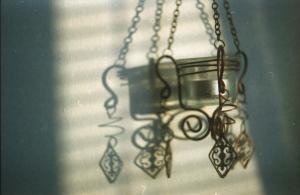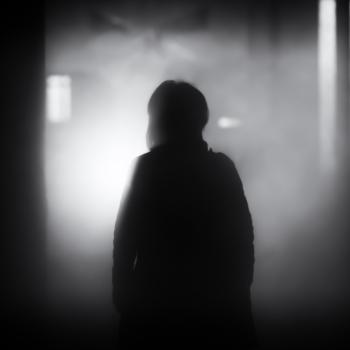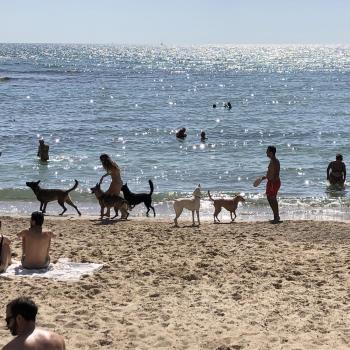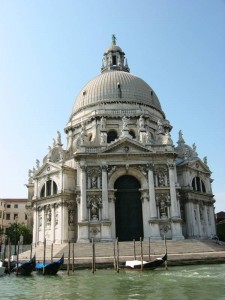 In Venice, in the Santa Maria della Salute church, in the presence of Madonna della Salute (Madonna of Health), I sang Debbie Friedman’s Mi Shebeirach, Jewish prayer for healing, quietly to myself.
In Venice, in the Santa Maria della Salute church, in the presence of Madonna della Salute (Madonna of Health), I sang Debbie Friedman’s Mi Shebeirach, Jewish prayer for healing, quietly to myself.
Before entering the area of the church roped off for prayer only, I hesitated. Should a pretty good Jewish boy enter a spaced designated for Catholic worship?
My wife and I were near the end of our first trip to Italy. In the months leading up to the trip, I had been reading Merton’s New Seeds of Contemplation, a book I had owned for years but had never read or had read only a little of, probably in my late twenties, and had forgotten.
Grounded in his experiences as a Trappist monk and drawing on his deep interest in Buddhism and other contemplative traditions, Merton’s essays on faith, detachment, egoism, dualism, God, and related topics awakened in me an interest in and openness to Catholicism that I had never before experienced.
“We do not detach ourselves from things in order to attach ourselves to God,” Merton writes, “but rather we become detached from ourselves in order to see and use all things in and for God.”
This passage might have excited me even if I hadn’t been practicing—as a Jew—mindfulness meditation regularly for the past seven years. My teachers, two loving and wise rabbis—have stimulated my inquiry into such concepts as “self” and “God” as understood and experienced from both Jewish and Buddhist perspectives.
Nothing in this passage and so many others, including this—”The obstacle [to our union with God] is in our ‘self,’ that is to say in the tenacious need to maintain our separate, external, egotistic will”—in Merton’s New Seeds presented itself as an obstacle between my own experiences as a contemplative Jew and Merton’s as a Catholic monk.
Merton’s descriptions of contemplative experiences validated some of my own and challenged me: can I learn to see clearly the story of my “self” and, through steady, compassionate practice, let go of “the tenacious need to maintain” my “separate, external, egotistic will” and experience, if only for a moment here, a moment there, “all things in and for God”?
Though there is nothing to be found in New Seeds about the history of the church, nothing in particular about Rome, Florence, or Venice, Merton, I sensed, was as good a way as any to prepare me for Italy, an inner experience of Italy.
Laurie, who retired in the fall, devoted months to planning our trip. At the Osher Lifelong Learning Institute at UNC Asheville, she took a class on Italian Renaissance Art. After every class, I devoured her notes.
Preparing for her encounter with ancient monuments and ruins, she sat for countless hours face-to-face with an “ancient” object in our house—a nine-year-old Dell laptop computer—plying it with questions: What apartments are available for rent-by-owner on such and such days in Rome? In Florence? In Venice? Are they comfortable? Clean? Strategically located? Do they have WIFI? She scrutinized the comments section of each apartment’s listing for hidden messages.
Diligently, methodically, she planned the itineraries for our days in Rome and Florence. By Venice, she said, we’ll be tired. We’ll want to rest. We’ll take the apartment overlooking the Gulf of Venice, the apartment, as it turned out, located right at the Celestia vaporetto (waterbus) stop, in the Castello neighborhood, about as far possible from the knot of tourists in San Marco Plaza.
In Rome we walked from the Coliseum to the Jewish Ghetto and across Ponte Fabricio and Ponte Cestio to Trasteverre, and from there to the monumental statue of Giordano Bruno looming over Campo de’ Fiori, and to the view of the Spanish Steps from the room in which Keats died, and back to our modest room in the Laterano neighborhood.
We squeezed through the Vatican crowds as we followed Barbara, our guide, who began and concluded every stop on the tour with O-Kie.
In Florence, we concentrated on Francisco, our guide to the Uffizi, because we wanted to see how seeing changed: in the Ognissanti Madonna, Giotto paints Madonna and child in a well-defined, realistic space, and light and shadow on the knees and folds of the garments offer fullness, offer dimensionality, offer the human eye a representation of the human body in human space.
We padded around Brunelleschi’s paradigm-shifting cathedral dome and wandering narrow Florentine streets in search of Gastone, the restaurant recommended by Alessandro, whose apartment on Via dei Servi we were enjoying, crossing and returning over Ponte Vecchio.
My wife was right. After walking, walking, and walking, we had dutifully seen what we had dreamed of seeing. We had roamed as long as the light and our legs would allow us to roam.
We were ready for days without an itinerary. We were ready for Venice.
To be continued tomorrow.
Richard Chess is the author of three books of poetry, Tekiah, Chair in the Desert, and Third Temple. Poems of his have appeared in Telling and Remembering: A Century of American Jewish Poetry, Bearing the Mystery: Twenty Years of IMAGE, and Best Spiritual Writing 2005. He is the Roy Carroll Professor of Honors Arts and Sciences at the University of North Carolina at Asheville. He is also the director of UNC Asheville’s Center for Jewish Studies.


